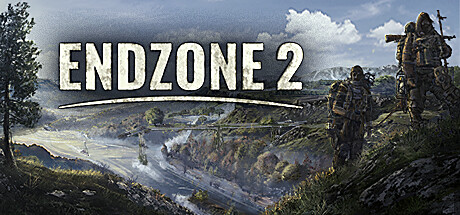
- "It's the hustle and the collective aspiration to elevate what we possess. Witnessing the machines in operation - observing our companions harvesting berries and sifting through scrap - that's what ignites the drive within each of us. We all yearn for advancement and renewal." -

What makes a game feel alive?
A city-building strategy game thrives on detail. As a player, you want to be able to understand how your own settlement grows and comes to life. In addition to detailed buildings and a vibrant environment, animations play an immediate role in immersing oneself directly into the experience. In Endzone 2, it's important for us to continue visually depicting the lives of settlers and making all processes within the settlement readable and accessible. In this context, the term often used is the 'Wuselfaktor'. To achieve this, we have implemented several systems that enable animations of buildings and settlers within buildings.

Building Animations
To animate buildings in Endzone 2, certain precautions need to be taken. It's necessary for us to plan ahead in the visual design phase and make compromises. For instance, all objects intended to receive animation must already exist as separate sub-objects within the final building. An example of this would be the crucibles that hold the molten metal of the Iron Caster.

Upgraded Well placed on swamp area.

Furthermore, we've developed several custom tools that allow us to create keyframe animations for each individual object. This involves generating a bone object at the necessary location. Bones can be envisioned as actual skeletal structures. By manipulating the rotation and translation of these objects at any given point in time, we craft smooth animations for the various components of the building.

In-engine screenshot of the Iron Caster Building, showing the single Bone components and interface.

Brick Factory Animation.

By individually treating subcomponents within the building, highly complex workflows can be coordinated and depicted as animations. For instance, the complete animation of the Iron Caster spans nearly 60 seconds. However, we typically aim to keep each animation within a range of 15-30 seconds.

Iron Caster Animation.

Fluff Paths
"Fluff paths" is our system's term for a path that is detached from the actual navmesh. This allows settlers, who typically follow their established routes, to spontaneously wander into building areas and trigger scripted animations. An example of this would be the fishing hut. A settler walks from their house to the fishing hut, where, in a scripted animation, they take a fishing rod, walk to the front of the pier, and then cast their line. This is observable in the example below, where the orange area depicts the collision or “border” of the fishery and the small blue dots are visual pointers of the coordinates to the right. Each point represents a checkpoint of the path and a possible Animation that is played there.

In-engine screenshot of the Fishery, showing the available Fluff Paths.

The Fluff Path system is also used to specify where builders should stand to support the construction of a building with animations. Within Unity, we can precisely designate individual points or, in our case, "anchors," where a path ends and the construction animation can be played.
Another outstanding feature of our custom solution is the ability to directly link the number of possible Fluff paths and animations to the number of settlers working in a specific building. For instance, if the Iron Caster can accommodate up to 10 settlers working simultaneously, we can create 10 different animation presets. When a settler enters the building, they randomly select one of these presets. This approach allows us to showcase complex workflows while ensuring that settlers never get stuck in each other.

https://store.steampowered.com/app/2144640/Endzone_2/
As Discord is our main platform for feedback and discussion within the community, we highly recommend joining us and sharing your feedback there.

